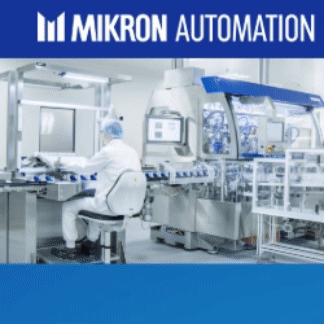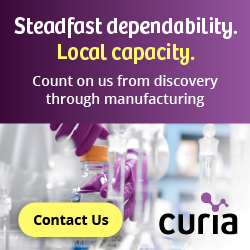CDMOs Need to be Prepared for the Revision of the EU-GMP-Annex 1

Annex 1 of the EU-GMP-Guide Manufacture of Sterile Medicinal Products is considered the most important European regulatory standard for the manufacture of sterile pharmaceutical products. The current revision will have to lead to a rethink within the industry.
Katja Kotter, Vice President Regulatory Affairs/Quality Compliance, and Julia Allgaier, Lead Expert Contamination Control, both experts at Vetter, a world-leading service provider for aseptically fill-finish manufacturing for injectables, offer their insights.
Q: What does the revision of the EU-GMP Annex 1 include?
Kotter: Annex 1 is undergoing a complete overhaul in collaboration with the European Medicines Agency (EMA), the World Health Organization (WHO), and the Pharmaceutical Inspection Co-operation Scheme (PIC/S). It is one of the most extensive revisions since its implementation in the 1970s. A draft of the “new Annex 1,” published in December 2017, and revised again in February 2020, made it clear that the guideline will not only be updated with some parts completely rewritten but also more detailed, stricter, and with additional content.
Q: Where do you see the main changes in the “new Annex 1?”
Allgaier: Developments in manufacturing and testing, as well as quality risk management principles, are being considered to a greater extent. The minimization of the risk of microbial, particulate, and pyrogen contamination and, therefore, the assurance of sterility of the manufactured products is one of the main focus topics of the outlined draft. This shows that regulatory requirements in the pharmaceutical industry are expected to increase further.

Monitoring in aseptic commercial manufacturing
Q: How did Vetter react to the first draft in 2017?
Kotter: We formed an interdisciplinary team that has been and still is monitoring the development of Annex 1 very closely. After a thorough internal evaluation of the first draft comments to EMA were provided via the International Society for Pharmaceutical Engineering (ISPE). Within ISPE, Vetter actively participated in the consolidation of the industry comments and also contributed to the correspondence by the group of industry associations.
Allgaier: We also participated in conferences, webcasts, and panel discussions on the topic. This was helpful for the team to understand the way of thinking regarding the requirements put forward by EMA, PIC/S, and WHO, and to assess the implications for our processes at Vetter once the final version is published.
Q: How does Vetter prepare for the possible changes in the industry due to the Annex 1?
Allgaier: With the draft Annex 1, industry changes are seen especially in the areas of quality risk management, contamination control strategies, and environmental and process monitoring. Vetter has been expecting this industry trend and therefore evaluated the requirements of the draft Annex 1 (2020 version) thoroughly. We have already defined a project organization that will allow rapid implementation of the defined measures of Annex 1 once it becomes effective.
Kotter: Additionally, we already initiated a number of in-house activities. We have implemented a contamination control strategy that has already been successfully inspected. We also initiated several projects to evaluate possible implementation strategies in case certain requirements become part of the final Annex 1, as well as projects to evaluate the compliance of the Vetter systems to the new requirements. For instance, with environmental monitoring or validation of aseptic processes.

State-of-the-art laboratory environment
Q: Do you believe Vetter is ready for the “new” Annex 1?
Kotter: We believe Vetter is well-positioned to address the topics outlined within the draft paper. We will continue to actively track the development of Annex 1 to assure continued compliance of our systems and processes. This will allow us to further develop the processes and quality standards for manufacturing sterile and high-quality pharmaceutical products.
About the Authors
Katja Kotter joined Vetter in 2002 after her studies of Pharmaceutical Technology and Industrial Engineering. For the past 19 years she has been working in the Quality department. Since 2017 she assumed the role as Vice President RA/QC. In her role she is also responsible for GMP compliance including the review of international regulations.
Julia Allgaier attended the University of Stuttgart/Hohenheim (Germany) and North-West University (South Africa) and gained a degree in Food Science with a focus on Biochemistry. In 2012 she started her career with Vetter as Manager in aseptic production. After 3 years she changed to the Quality Assurance department assuming the role as Director. In 2020, Julia became Lead Expert for Contamination Control/ Sterility Assurance.

About Vetter
Headquartered in Ravensburg, Germany, Vetter is a family-owned, global leading contract development and manufacturing organization (CDMO) with production facilities in Germany, Austria, and the US. Currently employing more than 5,700 individuals worldwide, the company has long-term experience in supporting biotechnology and pharmaceutical customers both large and small. Vetter services range from early stage development support including clinical manufacturing, to commercial supply and numerous packaging solutions for vials, syringes and cartridges. As a leading solution provider, Vetter appreciates its responsibility to support the needs of its customers by developing devices that contribute to increased patient safety, convenience, and enhanced compliance. Great importance is also given to social responsibility, including environmental protection and sustainability. Learn more about Vetter at www.vetter-pharma.com.
Total Page Views: 1729













